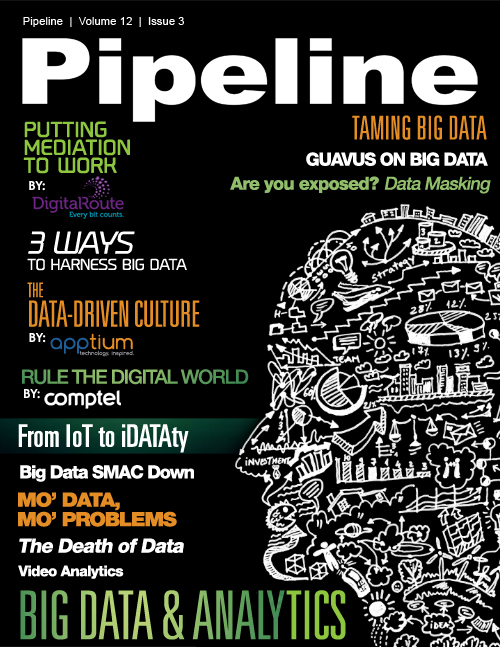The Time to Establish a Data-Driven Culture is Now
By: Rick Kapani
 Data analysis may be the single, largest business driver for service providers and enterprises today. The insights derived from analyzing various data sources to make strategic decisions are
transforming organizations into a new, data-driven culture. This emerging data-driven culture promotes informed decision making across the organization, supported by a measurement and feedback
process to evaluate the results of such decisions, and the ability to link the results to significant shifts in organizational behavior.
Data analysis may be the single, largest business driver for service providers and enterprises today. The insights derived from analyzing various data sources to make strategic decisions are
transforming organizations into a new, data-driven culture. This emerging data-driven culture promotes informed decision making across the organization, supported by a measurement and feedback
process to evaluate the results of such decisions, and the ability to link the results to significant shifts in organizational behavior.The tsunami of Big Data as a major technical trend, coupled with latest advancements in business intelligence solutions, is powering this new culture and allowing service providers and enterprises to derive maximum benefit out their IT investments. The adoption of Big Data and data processing concepts are accelerating across different groups within each organization. The significant reductions in costs and technology footprints of Big Data solutions have also been a key driver in the adoption of this quickly emerging culture.
Back to the Future
Leading analysts and industry innovators have long touted the benefits of relying on data and insights from business intelligence and analytics to help make better and timelier decisions.Service providers are fueling the data-driven culture and rightfully so, since they uniquely possess troves of data, both structured and unstructured. Today service providers are striving to achieve the promises of this data movement and working to promote growth while increasing efficiency and profitability across the entire telecom value chain.
A renewed focus on the customer experience to improve customer satisfaction and grow revenue has resulted in a number of business initiatives to connect with consumers based on insights that break conventional thinking. This culture has allowed organizations to recognize key audiences, find actionable information that leads to business changes resulting in better customer experience, reduce cost, and streamline operations.
These initiatives are not replacing long-standing performance management; such as usage, SLA and incident reporting just to name a few. Rather, service providers are going to great lengths to further evolve these functions and rediscover these assets as differentiators in customer acquisitions and conversions. Service providers are exposing real-time analytics and ad hoc reporting via customer service portals which allow their customers to hold the service provider to a higher level of standard and service.
Big Data: Challenges and Opportunities
Operating within the challenges and limitations of today’s business, while transforming information systems to prepare for the future of information assets, necessitates a new "platform-oriented" mindset. With a robust, agile and industrialized information delivery platform, business users will be empowered with intuitive and self-service analytics applications that will help generate actionable insights and foresight. The key to transforming to a data-driven culture is to put the technology and tools directly in the hands of the decision makers. The greater the access and ability to visualize data in various forms, the more effective the information derived from the data. The biggest challenge in this domain has been the technology footprint of analytics solutions and the "batch mode" operations of data processing applications that are always delayed by 24 hours or more. Today, customers and business owners require information derived in real time from their data in order to be able to respond to a constantly changing environment.The opportunities in a data-driven culture constantly present themselves as new insights and data points are uncovered through the data-analytics process. The level of innovation and quality of consumer IT applications that are part of everyday life have ushered in new ways of thinking about and visualizing data. The adoption of new technologies and private clouds within enterprises has presented lower-cost options to process vast amounts of data that would have otherwise required expensive dedicated hardware and costly applications. There have also been great strides in the capabilities of modern browsers that present opportunities to move away from desktop-based applications enabling easier access, lower training requirements, and increased user adoption.



















